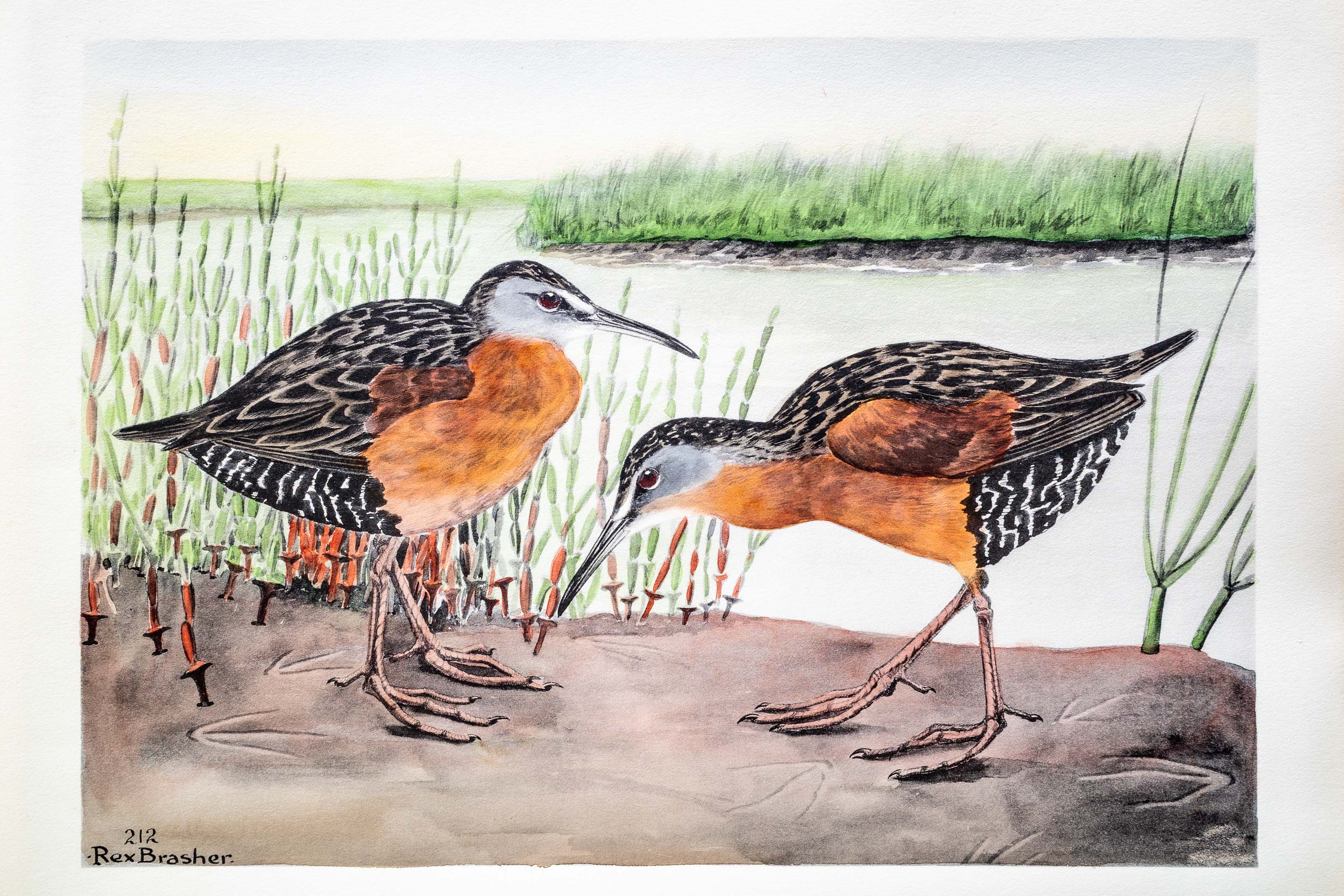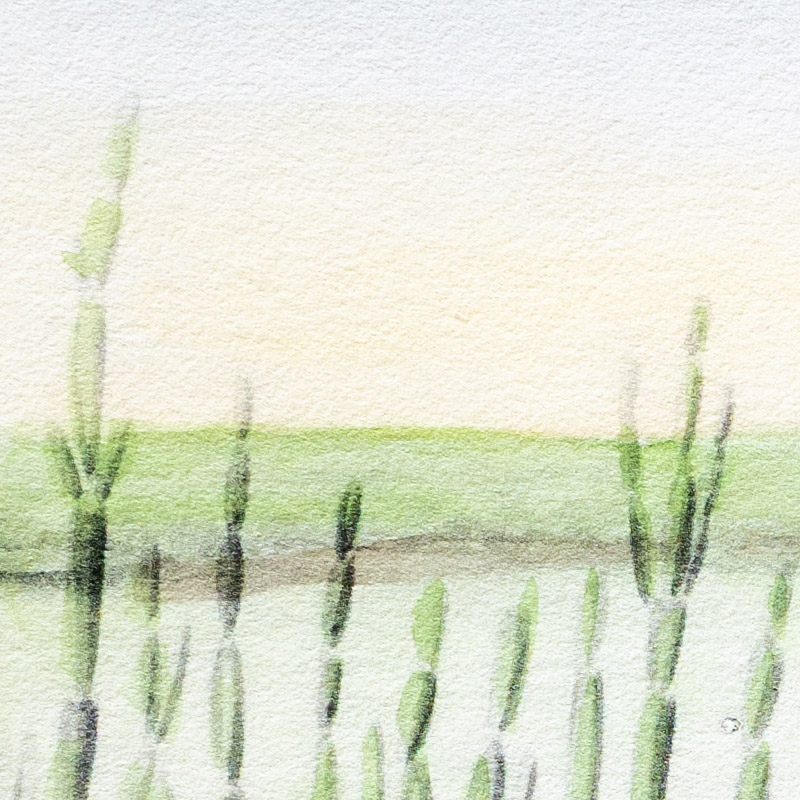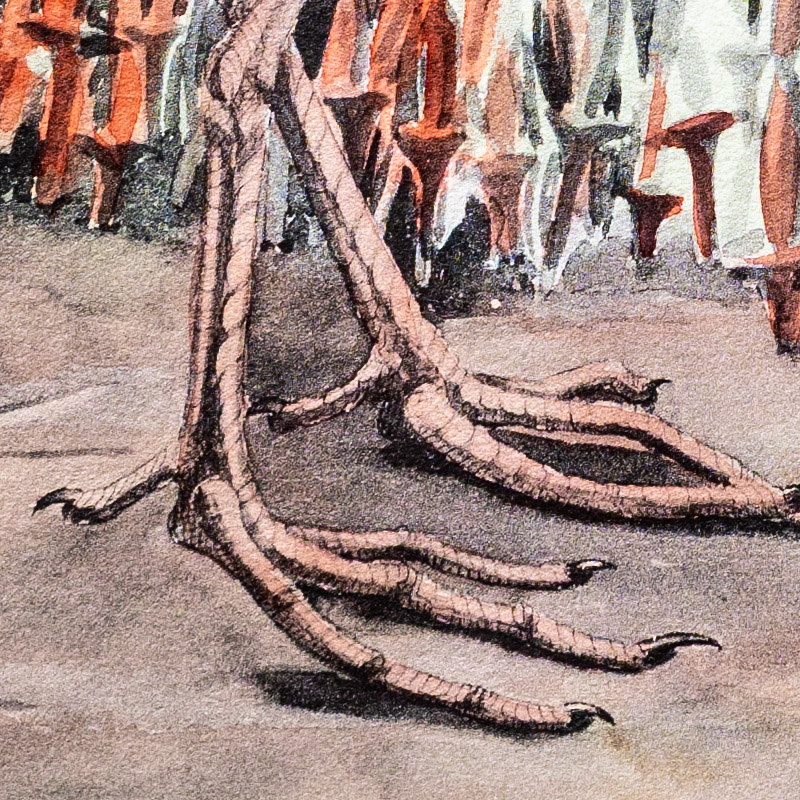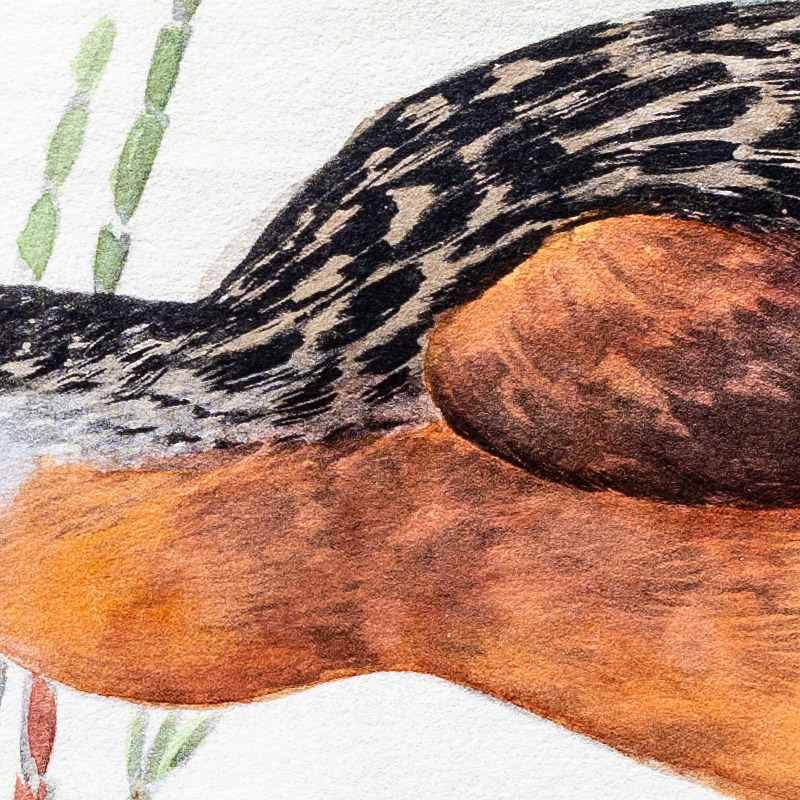






Unknown
1930
4
212
A team of dedicated board members, volunteers, and student interns has published every page in Volume 9. This volume includes 360 images of paintings and lyrical descriptions of birds, now available online for everyone to enjoy anywhere in the world. This is a monumental task. Each volume requires approximately 400 hours to photograph, edit, transcribe, catalog, and publish online. We need your support to complete this work.
If you're tech-savvy, have a good eye, are meticulous with details, and love structured data, please consider volunteering by emailing us at hello@rexbrasher.org.
We encourage all bird lovers and supporters to consider a monetary donation to support our mission to make Rex's work available for everyone. You can provide a one-time or recurring donation online.
One September nite I was lying in the 6 × 1½ cockpit of my homemade canoe, listening to southwardbound feathered tourists sifting by thru the purple dark. One winnowed past not three feet above and after a short interval, another. At first I thot they were Woodcock but as they continued passing I finally decided, thru elimination, that they were VIRGINIA RAILS — which subsequent acquaintance verified.
They went by with steady strong flight, widely different from feeble efforts awing during daylight. I have seen them as frequently in Spring and Fall as their shyness permitted, along the back meadow of coastal waters. Their habitat is among the fresh water meadows and one or two pairs nest every year in the bogs below our home here on the eastern edge of Dutchess County, New York.
Once I caught a gallant courting with quick tail wigwags, low bows and wing-curving. The lady bowed every time, gradually drew nearer and then — when the supreme moment was imminent — he caught sight of some delicacy and went after it! Desertion most flagrant and that arch delinquent did not deserve forgiveness but he must have been granted it for later in the summer I saw some youngsters foraging in the reeds.
The call notes are varied, more metallic, less raucous than Clapper Rails and very apt to resemble those of tree toads or other meadow denizens. It was years before I separated them.
NEST: well concealed near (rarely over) water; composed of reeds, grass or cattail stalks, sometimes a foot high.
EGGS: 6–12; buffy white sparingly spotted with brown shades.
Distributed in suitable localities over United States and southern Canada.